Bibiana Escribano
Occupational Therapist. Specialist in pshycomotricity, music therapy and sensory integration.
Read more postsAiala Grajirena is a therapeutic pedagogy teacher at San Miguel School (Doneztebe). Since the 2020-21 school year, they have been developing a project for a multisensory room at the school, where sensory stimulation is used as a foundation to promote student development.
This is the only physical space of its kind in the region, and Aiala herself shares everything they have learned over these years, their experiences, and their journey, which we are confident will be of interest to many professionals and families. Bibiana Escribano, an occupational therapist and advisor at Qinera, joins her in this interview.
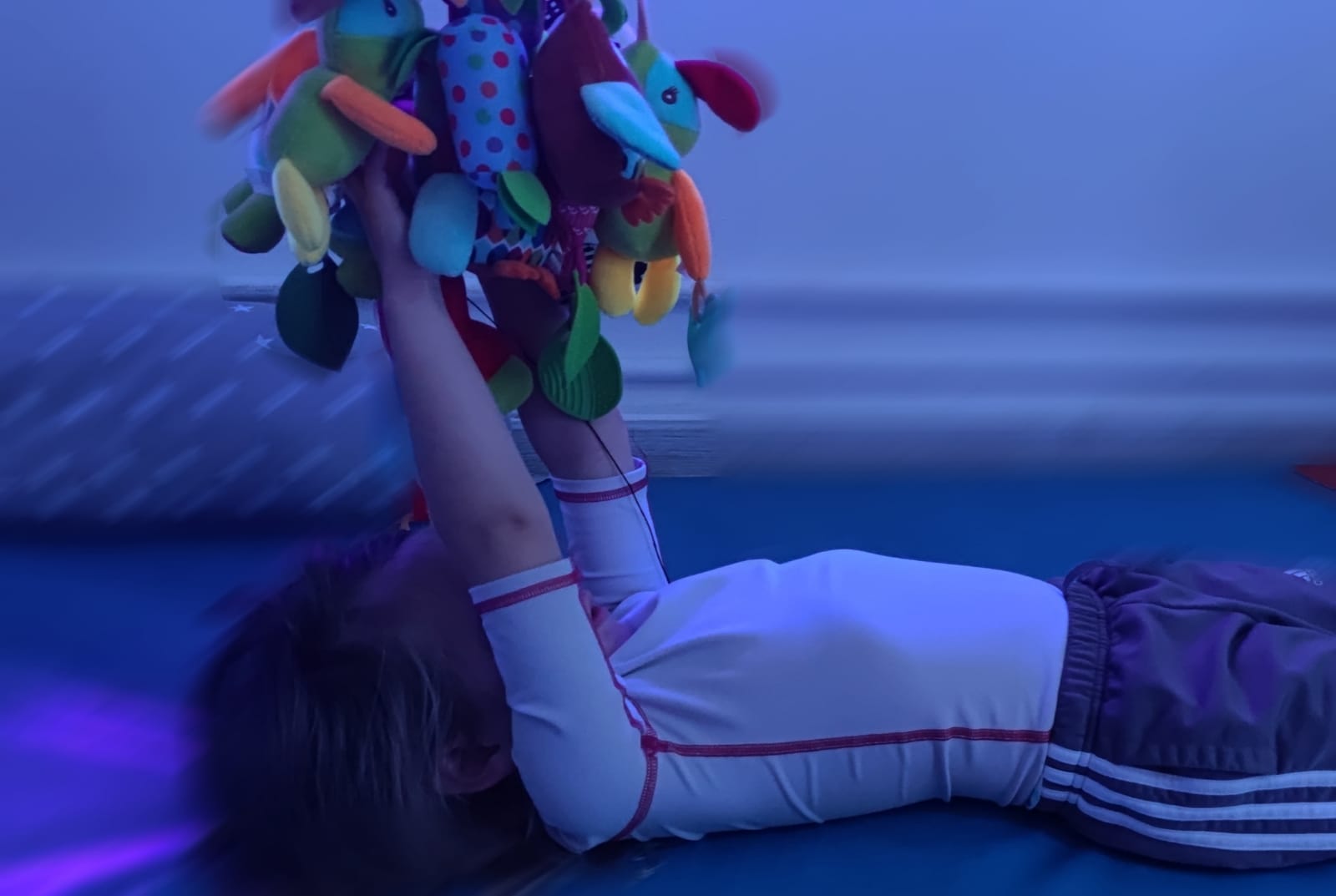
(Bibiana Escribano) Aiala, thank you so much for this interview. We find your experience and journey very valuable. Could you tell us what inspired you to seek sensory tools and adopt this ‘sensory’ perspective?
(Aiala Grajirena) In the 2020-2021 school year, a student with special educational needs enrolled at our school. It was a significant challenge for us because up until that point, we hadn’t had any students with those characteristics, and therefore, we weren’t prepared to support them. The counselor who was with us at that time immediately contacted the Andrés Muñoz Public School for Special Education in Pamplona.
It was during the COVID times, returning to school after being at home, and it wasn’t easy to arrange an in-person visit. However, we were finally able to visit them, and I remember they treated us with great kindness. That visit made us realize that what we needed in our school was a multisensory room.
(B) And how was the process of creating and financing the project?
(A) We sought help from the Department of Education and CREENA, but the response was that we had to manage with the annual budget allocated to each school. Therefore, seeing that it wasn’t going to be easy, I decided to submit two projects to secure financial support: one to La Caixa and another to the Social Services of the local Mancomunidad. Meanwhile, I started training with Qinera, which has always been a significant support in this project.
“Seeking funding is a bittersweet process: extra work, prioritizing and setting goals, finding time that we often don’t have. But once it’s granted and completed, it’s a great satisfaction.” – Aiala
To our surprise, both projects were accepted, and thus we were able to start setting up the room. With the funds received, we were able to purchase the bubble tube, fiber optics, and vibroacoustic waterbed. It was a very special moment, something unimaginable but we were achieving it. Gradually, we shaped the room to what it is today.
(A) This process has been bittersweet. Presenting these projects involves extra work, setting priorities and goals, requesting quotes, preparing the project… and once it’s granted and completed, a report must be submitted. As I mentioned, it’s extra work, but seeing the results at the end brings great satisfaction. I must also say that from the very beginning, I have received a lot of help and support from the school’s management team, the teaching staff, the APYMA Erreka… I have felt very supported and I am very grateful for all the support received.
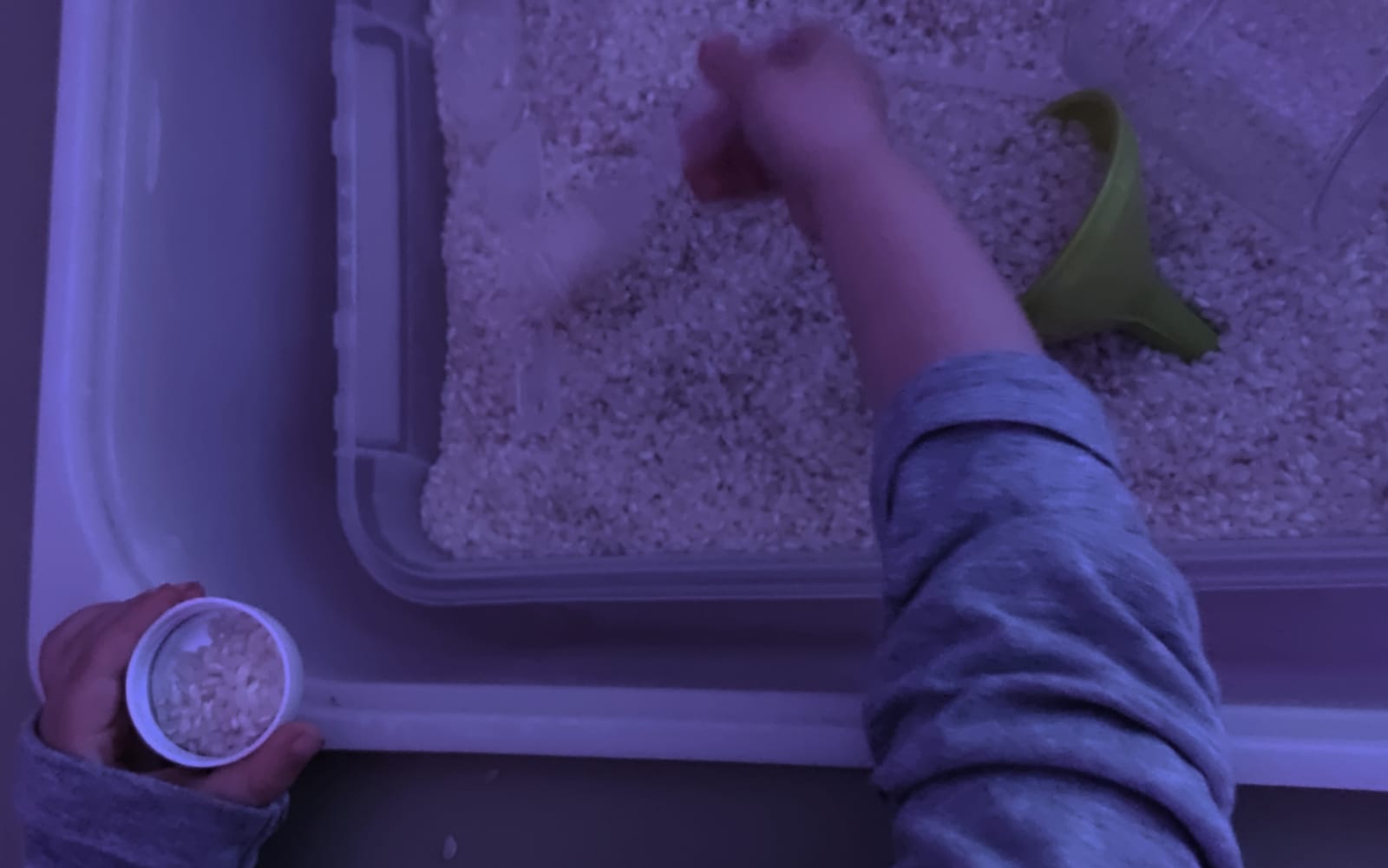
Incorporating technology into our multisensory room
(B) We all have used homemade materials. In fact, many can be good, but what does multisensory technology contribute? What has it brought to you or what leap have you been able to make with technology?
(A) Initially, it wasn’t easy. With insufficient funding, we started by creating homemade sensory materials, using a lot of imagination, and, truthfully, very beautiful things can be made, but multisensory technology is another world. Sensory technology is much more striking, attractive… and this helps you connect much more with the student.
“Multisensory technology helps you connect much more with the students.” – Aiala
(B) What benefits do you think these tools have brought you?
(A) It has brought us many benefits that we wouldn’t have achieved working in regular classrooms or with homemade materials. When you enter the room, you immediately disconnect from the world. The feeling of tranquility these rooms provide is incredible; you connect with another world full of sensations, and these sensations are what make us live, feel, learn…
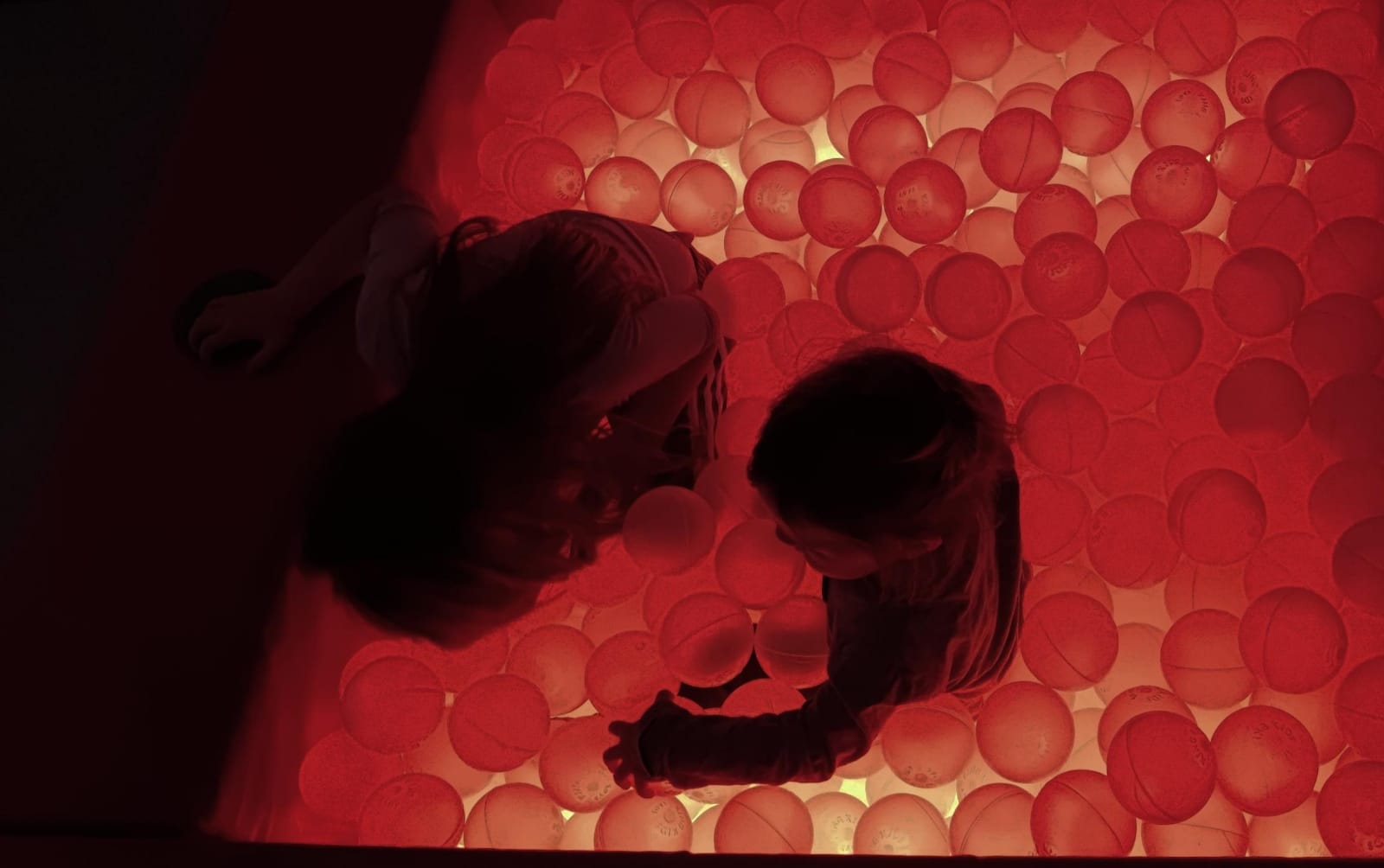
(B) I love vibroacoustics, and I think they are a very important resource for connection. What do you think? Have you seen benefits in users using the pool or the water bed?
(A) Yes, it’s a very powerful resource. At the moment, we have two vibroacoustic elements in the room: the waterbed and the ball pool. They are both very valuable because they achieve two very important objectives: activation and relaxation. In the time I have been working in the room, I have seen both reactions, but what I mostly seek with the vibroacoustic bed is relaxation for the student, and with the pool, their activation.
For activation, we use very powerful music with heavy bass, strong rhythms, whereas for relaxation, we use softer songs, with fewer bass and less pronounced rhythms. Usually, the vibroacoustic bed is what our students seek the most because they feel very comfortable in it; sometimes they have even fallen asleep. Imagine the situation: the water is warm, there’s calm music playing, gentle movement is generated… If I had to choose, I would choose the relaxation and well-being that the vibroacoustic bed provides.
(B) On the other hand, we are very concerned that children, regardless of their limitations, can directly interact with the physical environment around them. In the end, it’s a way to play and start controlling the environment. How do you make use of the different forms of interaction within the room?
(A) I have only been working in these rooms for three years, so I feel like I still have many things to learn, to experience… But I could talk about two different cases in terms of ‘control’ within the room.
So far, I have worked with a student who had significant limitations, so I took control of the entire session: setting objectives, working on them, and filling out the record sheet at the end of the session to try to identify his likes, desires, and needs…
However, this school year, I’m working with a student with different needs. In sessions, I have two main objectives: on one hand, to promote his relaxation and on the other, to propose different activities and help him focus on them. He asks for and really needs vestibular stimulation, as this greatly helps him relax (using the hammock, seeking balance with the large ball…) and he has a strong fixation on new technologies, although I haven’t used the tablet or button with him yet.
In summary, considering the characteristics of the student, different work is done in these sessions. It’s very beautiful because many times, it’s them who tell you what they want, what they need…
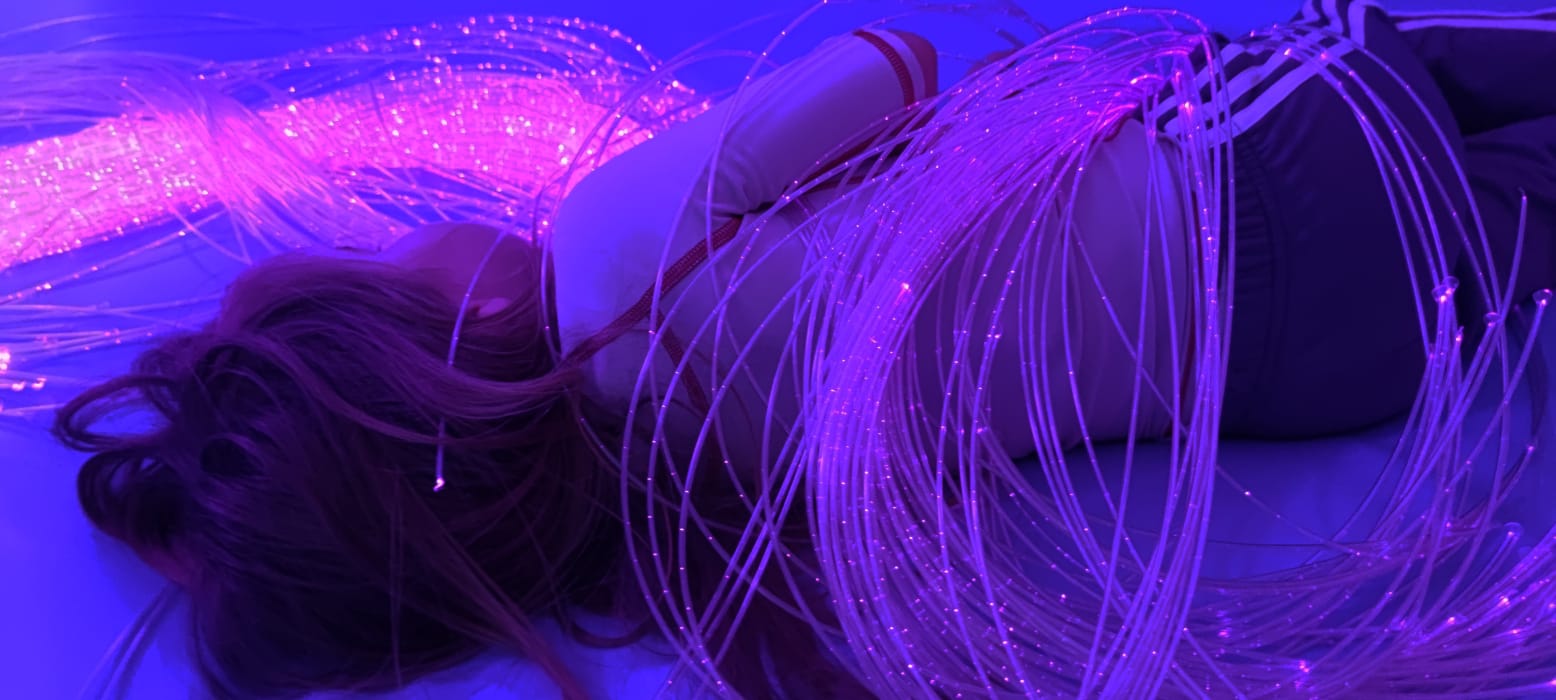
(B) Can you share a magical or special moment that has happened in the room with a user?
(A) If I had to choose a magical or special moment, it would be the expressions of joy, curiosity, and excitement they showed the first few times they entered the room. For them, it was magical to move from a classroom with noise, movement, and light to another space where silence, warmth, tranquility prevail… Children are usually very expressive, and seeing that smile appear on their faces is very magical and special. Moreover, what’s beautiful is that even now, knowing the room, that smile still remains.
Thanks to Aiala and the CPEIP San Miguel team for their participation in this article💜.
If you want to learn more about the benefits of Multisensory Environments or see how you could adapt it to your space, therapeutic goals, and users, you can send an email to hello@qinera.com.
Occupational Therapist. Specialist in pshycomotricity, music therapy and sensory integration.
Read more posts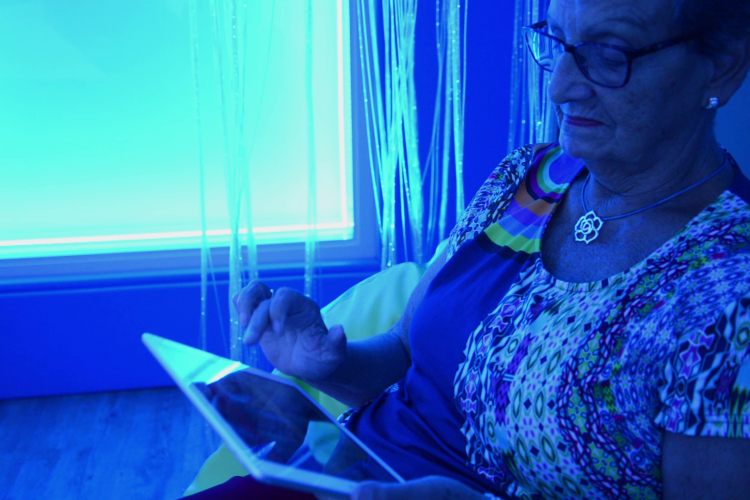
18 September 2024
Currently, new technologies are playing a fundamental role in improving the health and well-being of the elderly or dependent individuals. Among the numerous innovations and...
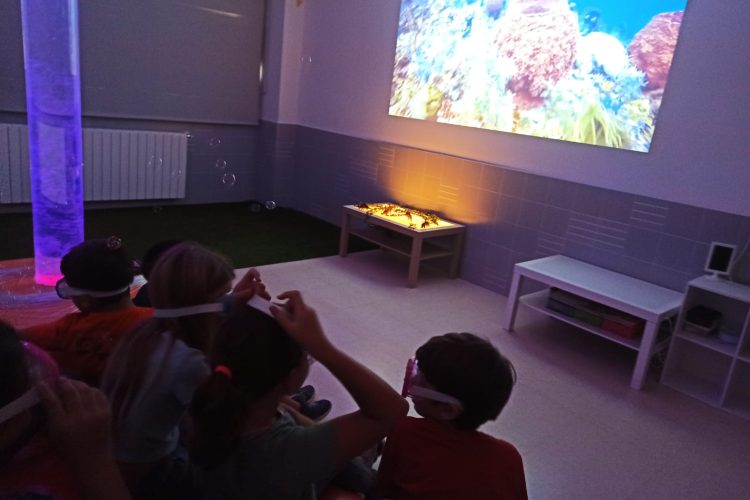
13 June 2024
One of the main questions that arises when considering installing a multisensory classroom in a regular school is whether it is really a good investment....
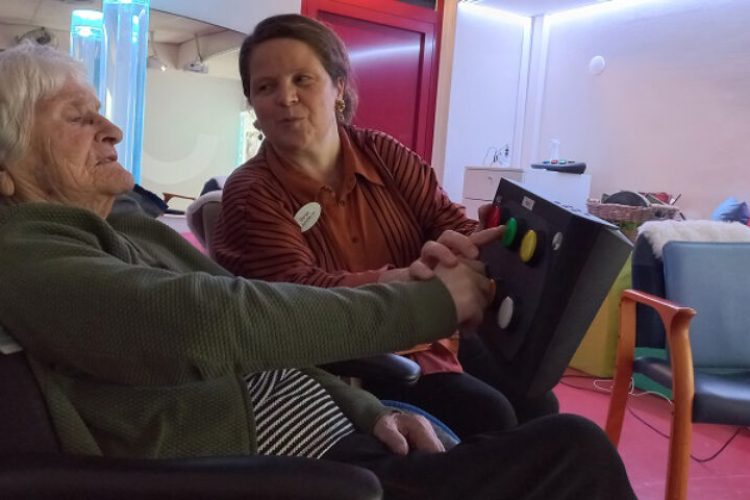
10 May 2024
Recently, the care home De Stichtse Hof, part of Vivium Zorggroep, inaugurated a brand new multisensory room with the interactive Qinera technology. This technology combines...